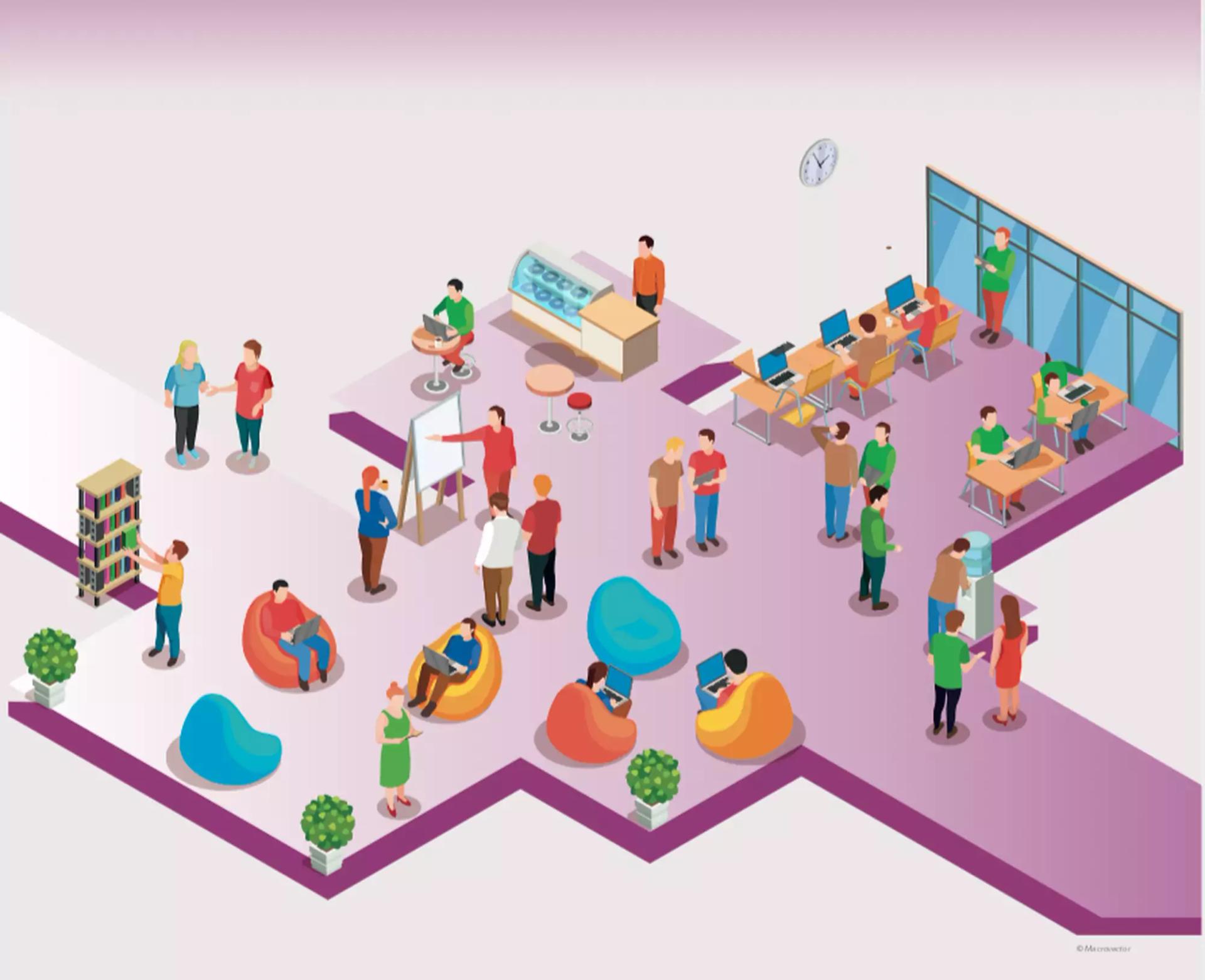Publication of an exclusive study "New Workspaces and (Re)engagement of Employees"
September 27, 2022

And if the work environment addressed the challenge of the great resignation?
In March 2022, 42,000 conventional terminations were signed in France, an increase of +15% compared to the period before the crisis when there were 37,000, signaling a generalized crisis of meaning and a desire to reinvent life. Employees are resigning en masse from organizations. Those who stay are less engaged, leading to a phenomenon known as "quiet quitting."
In addition to this alarm, remote work exacerbates the situation by affecting health, productivity, creativity, cohesion, and the actual production of work. Urgency is required because without workers, the organization is nothing!
Facing this unprecedented crisis, new workspaces provide comprehensive answers. Indeed, 87% of leaders confirm that the office has an impact on their company's image, and 81% believe that adjustments will facilitate their attractiveness. According to a Leesman study, the top 10% of rated offices have 90% of their employees wanting to return.
However, the temptation to reduce office space and impoverish workspaces remains strong, as seen in the post-crisis ratio, which dropped from 0.8 to 0.67 (workstations per employee). This desire to save on property costs risks worsening the situation.
The proportion of new spaces (rest, informal collaboration, etc.) has increased from 20% to 50% since the crisis. Therefore, the opposite is needed: enriching spaces and positive transformation are possible to restore their full power for the benefit of organizations and employees.
Three years after a significant study published at the end of 2019 on workspaces, Spinoza, the think tank for citizen happiness, in partnership with Factory, the agency for research and creation of places, reexamines the ongoing spatial revolution post-COVID and examines eight major changes likely to address the immense challenges posed by the two great resignations: the great and the soft.
8 major post-COVID trends to address the great resignation.
#1 A trend towards 'healthy offices.'
Because employees have been battered by a "perma-crisis" for the past 2 years, offices can now be designed for the health and well-being of employees.
#2 An 'activity-based office.'
(Designed according to activities) of equal surface area. Designing spaces based on the tasks performed by employees brings major benefits. It has become non-negotiable and requires not significantly reducing surfaces.
#3 'Mirror of work' spatial transformations.
Space transformations are symmetrical with those of work itself. Spaces are determined by both changes in management and trigger them.
#4 A 'convivialist' imperative for creating connections.
Faced with the loss of cohesion, a new responsibility now falls on spaces: to foster connections between employees, with the organization, but more broadly towards the neighborhood or even the planet.
#5 Hyper-digitalization of workspaces.
Driven by increasing digitization, spaces hybridize through a wide range of apps and services, becoming an "augmented workspace" that goes beyond the physical space.
#6 Nature or biomorphic design.
Because the living is good for humans (+17% productivity, -8 to 12% mortality rate), design inspired by nature is a comprehensive answer to the challenges of workspaces and can be complemented by the sensory, art at work.
#7 The design of new spaces, a highly technical job.
These extensive changes in spaces now require multiple expertise (design, zoning, change management, emotional listening), leading to the concept of "assisted spaces" or "smart offices."
#8 'Future is now.'
The prospective work on workspaces shows futuristic aspects already at work: Artificial Intelligence, redistributed nomadic spaces in hubs, etc.
Share the article
More news
see all
ProspectsNovember 19, 2024
From logo-brand to experience-brand: how branding challenges shape workspaces?

ProspectsOctober 16, 2024
From the Incognito Office to the Manifesto Office: when the workspace embodies company culture!

InterviewsOctober 5, 2024
What if you considered the overall employee experience in your offices?

ProspectsSeptember 23, 2024
From vacuum office to incubator office: How to redefine employees' relationship with their company?